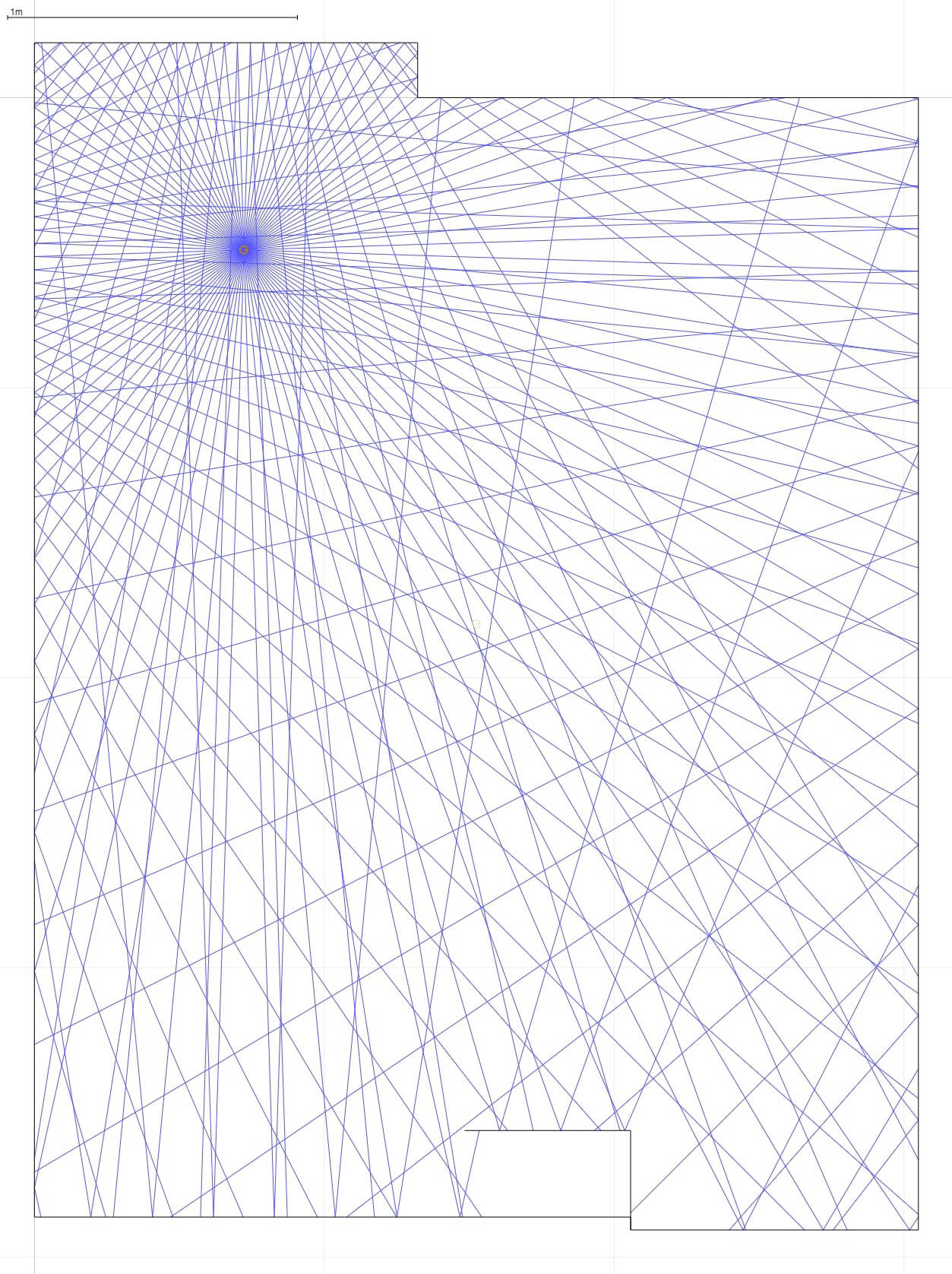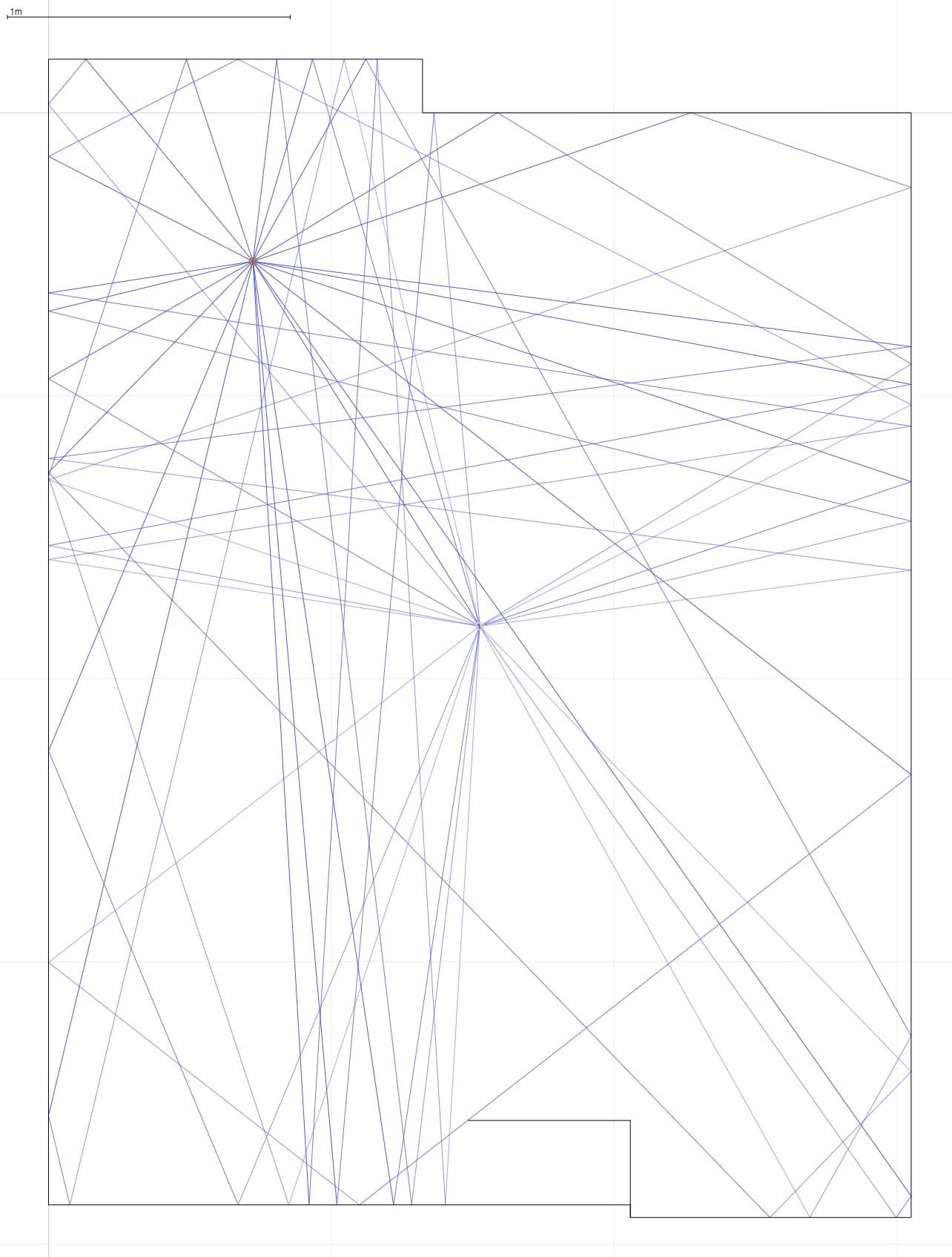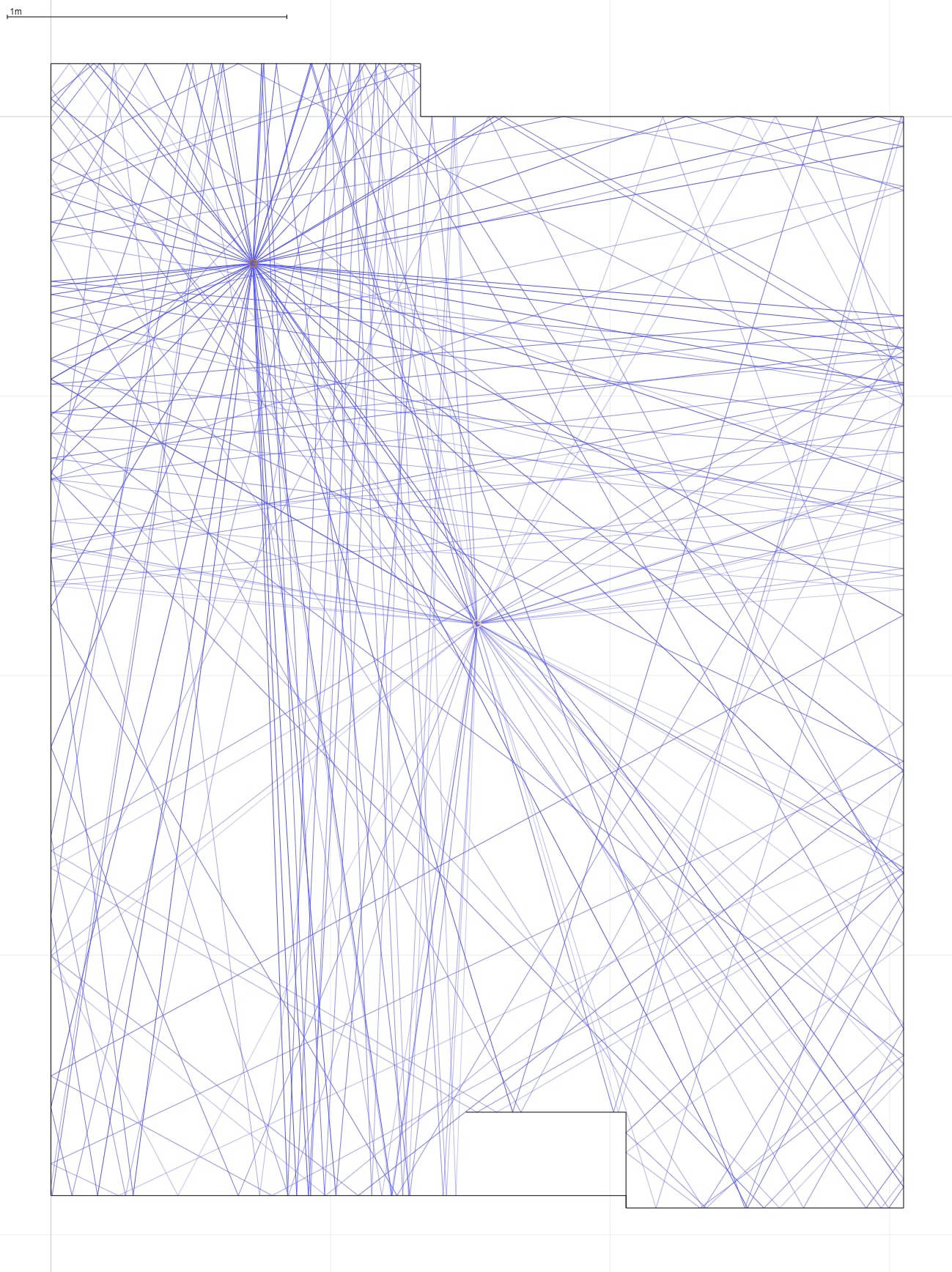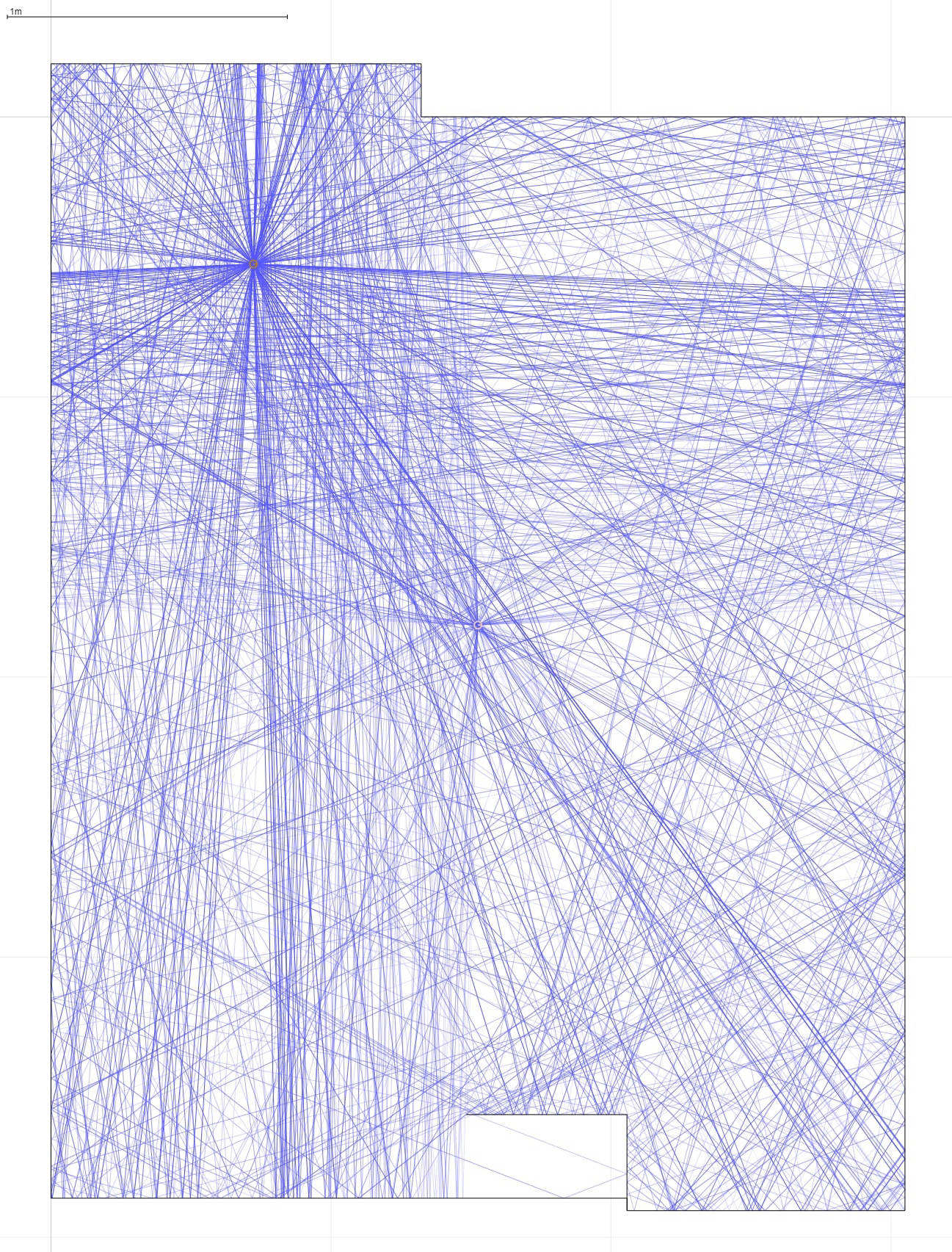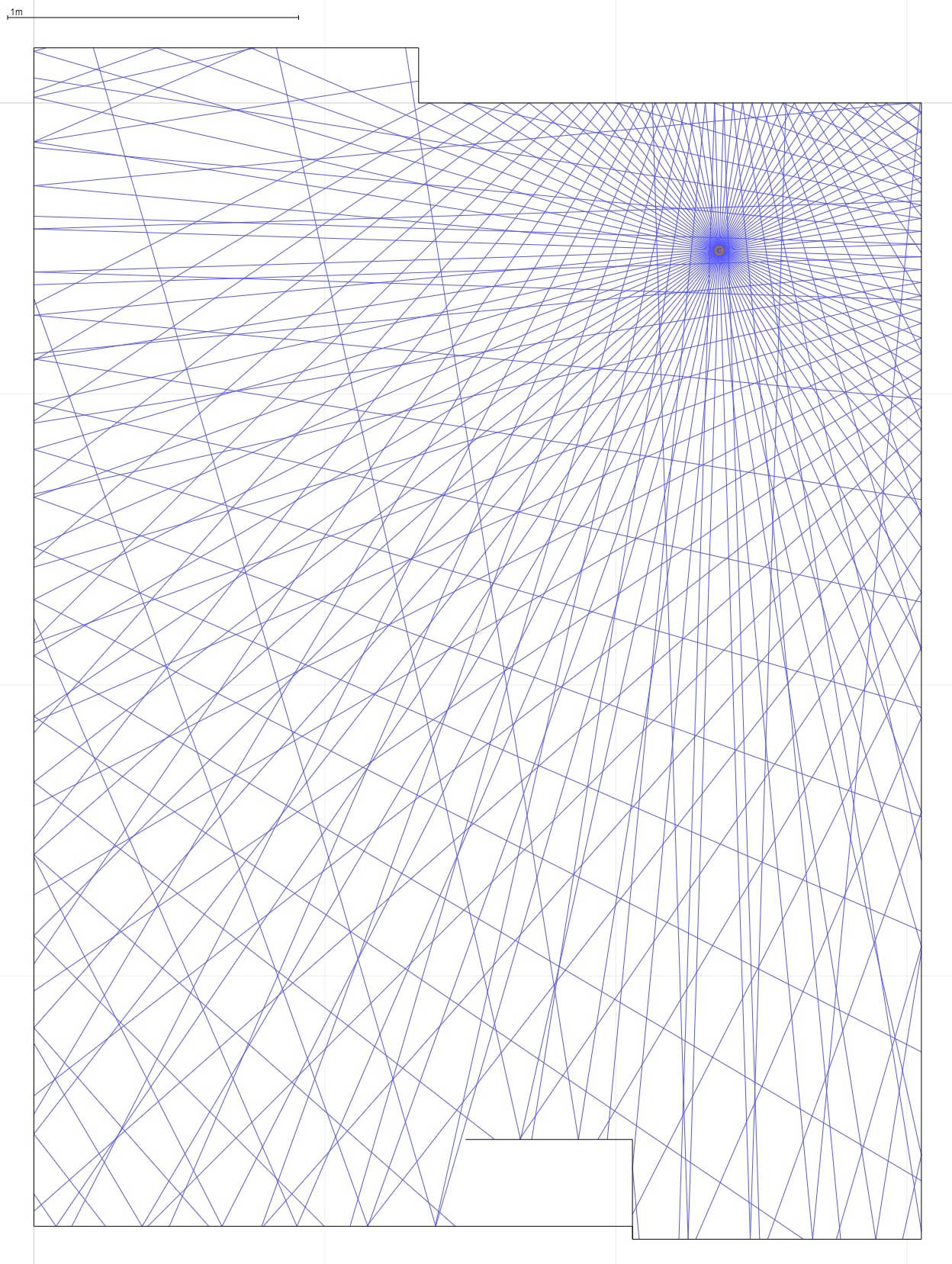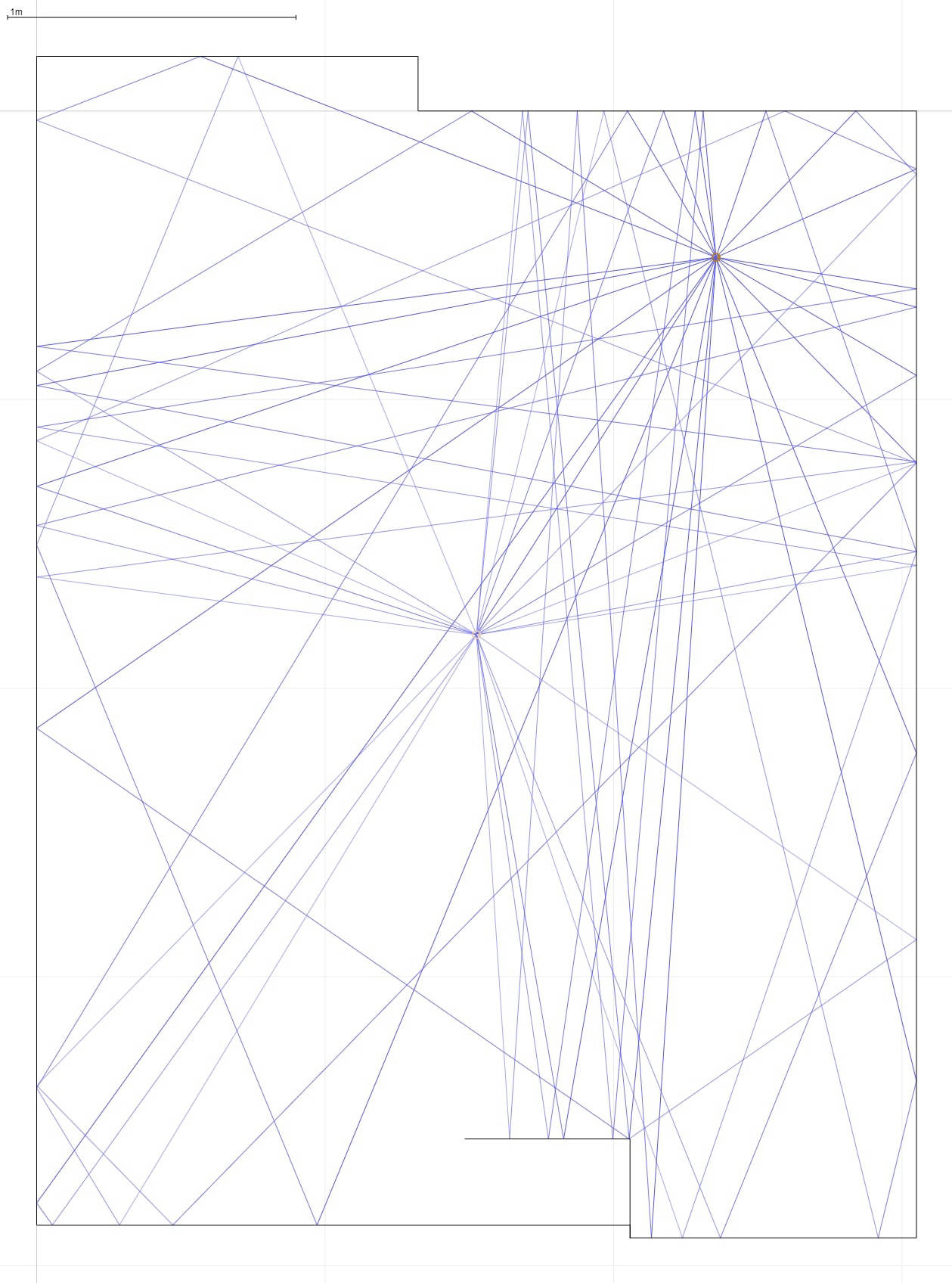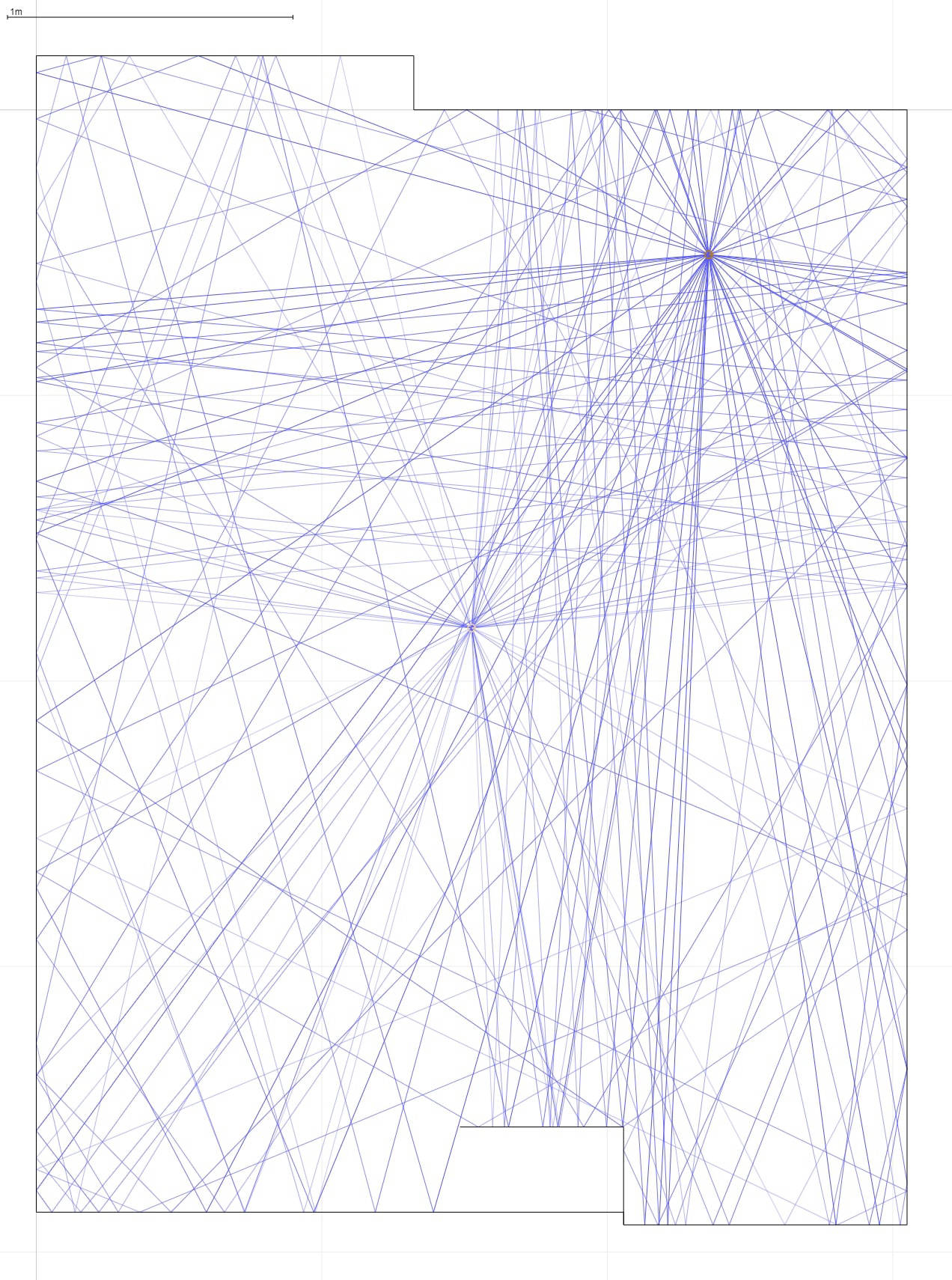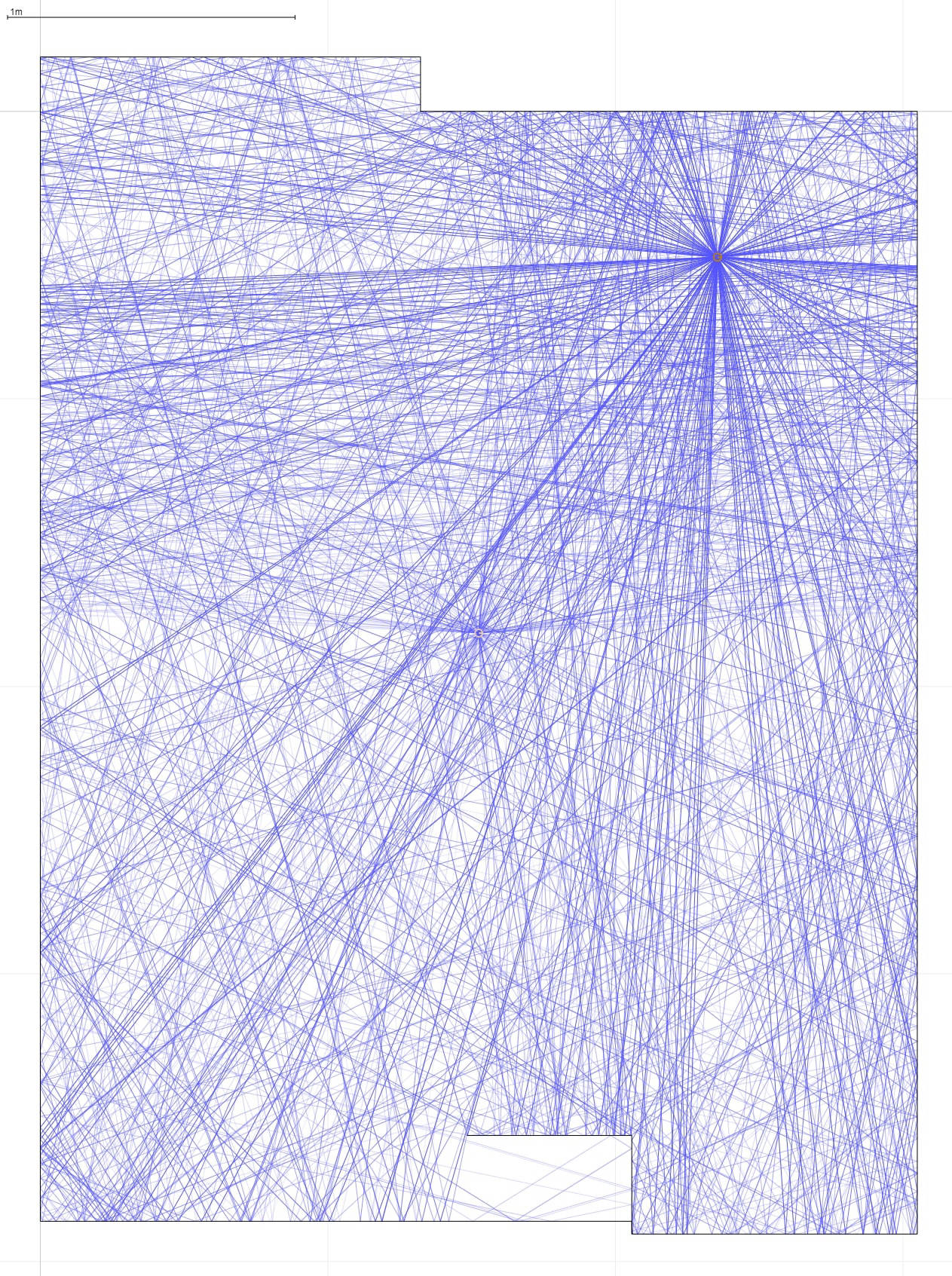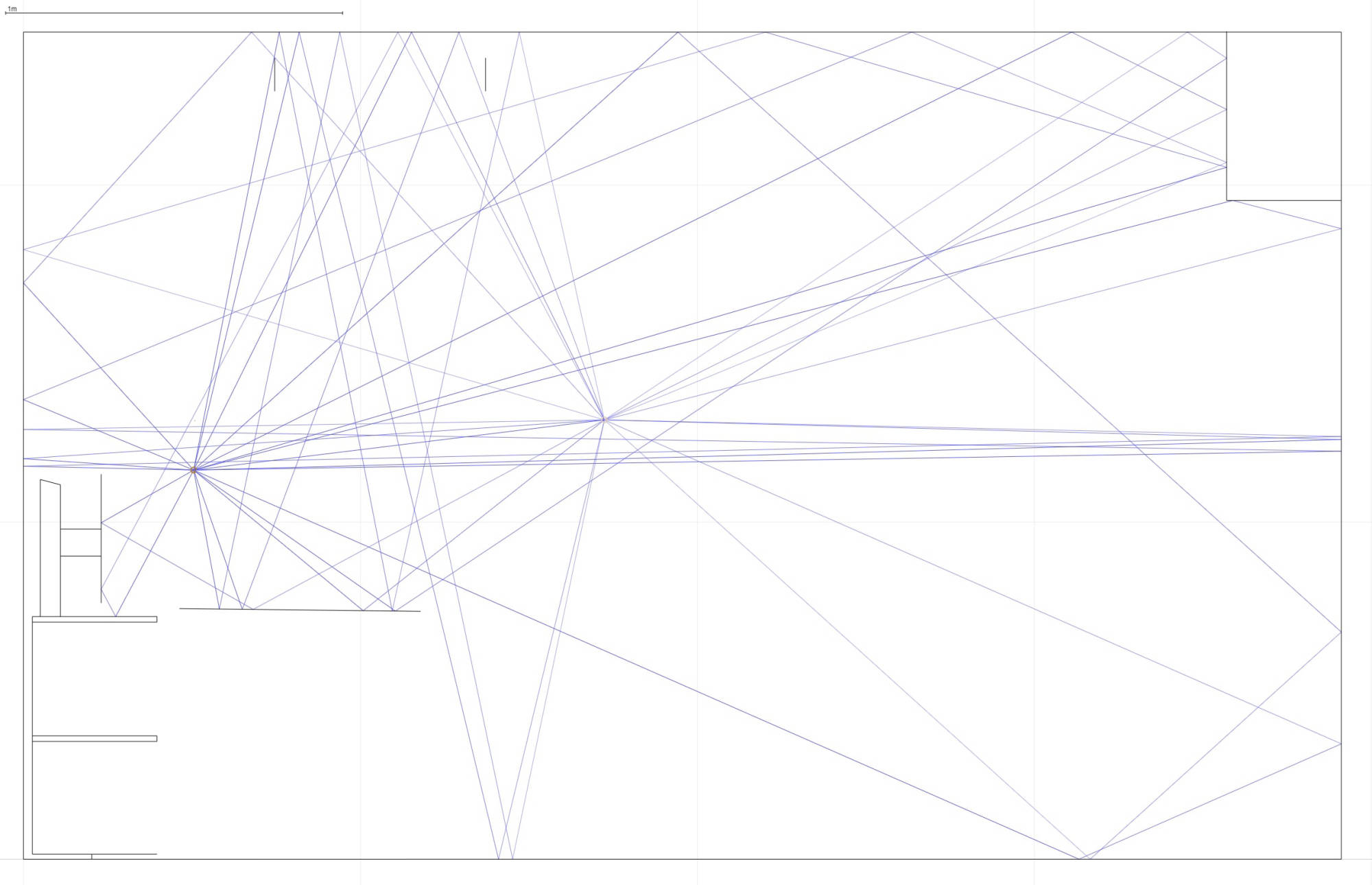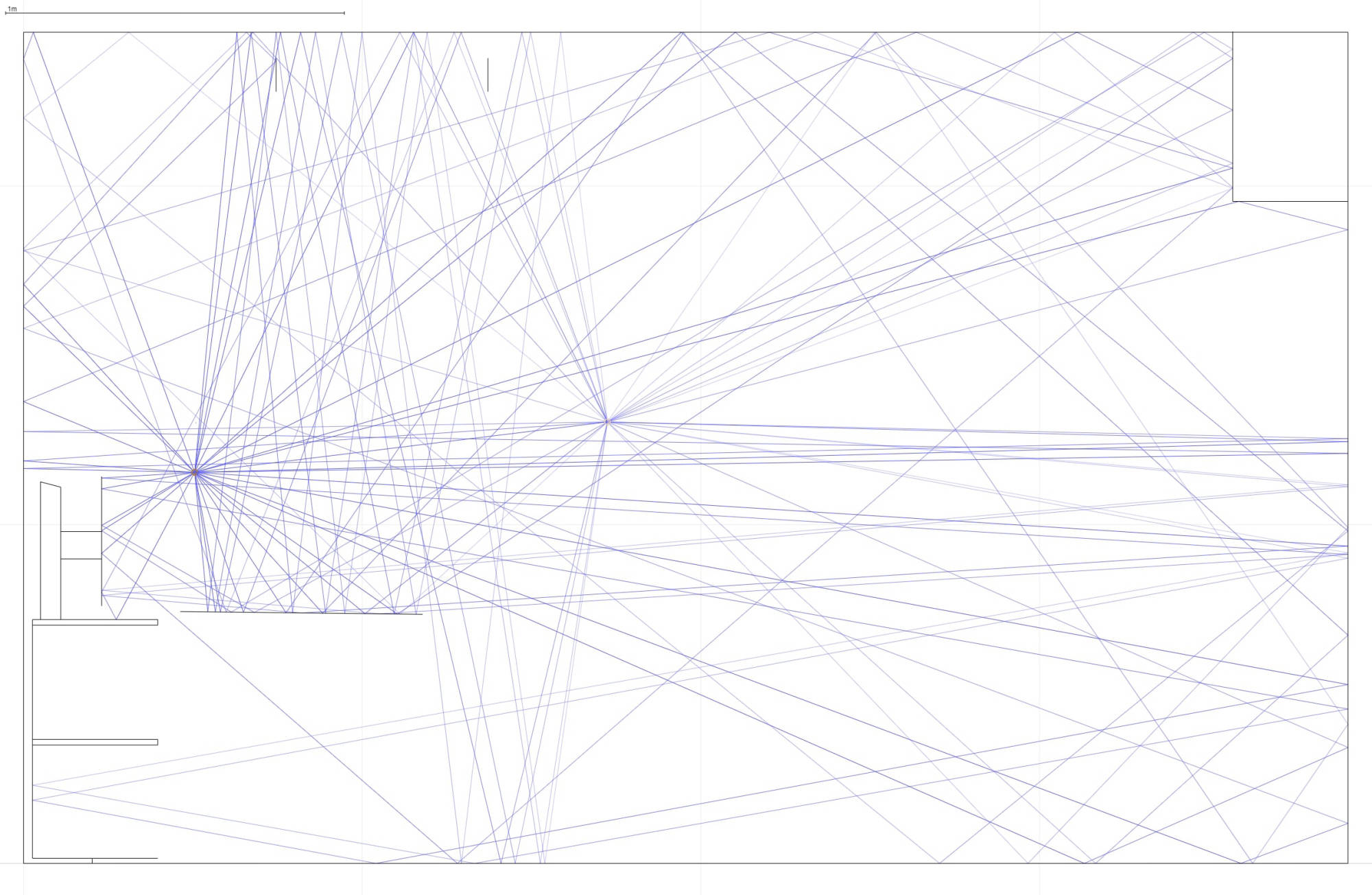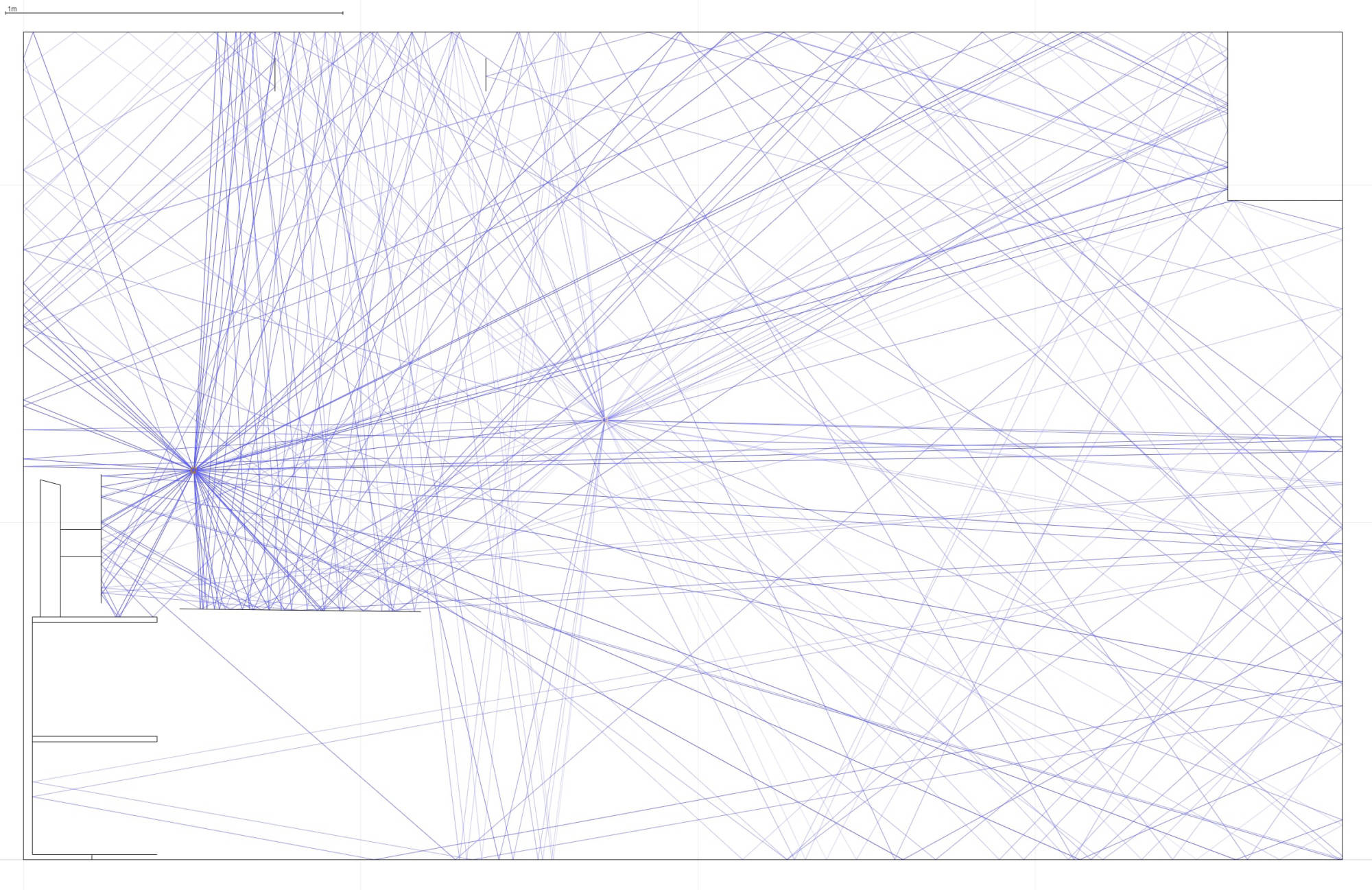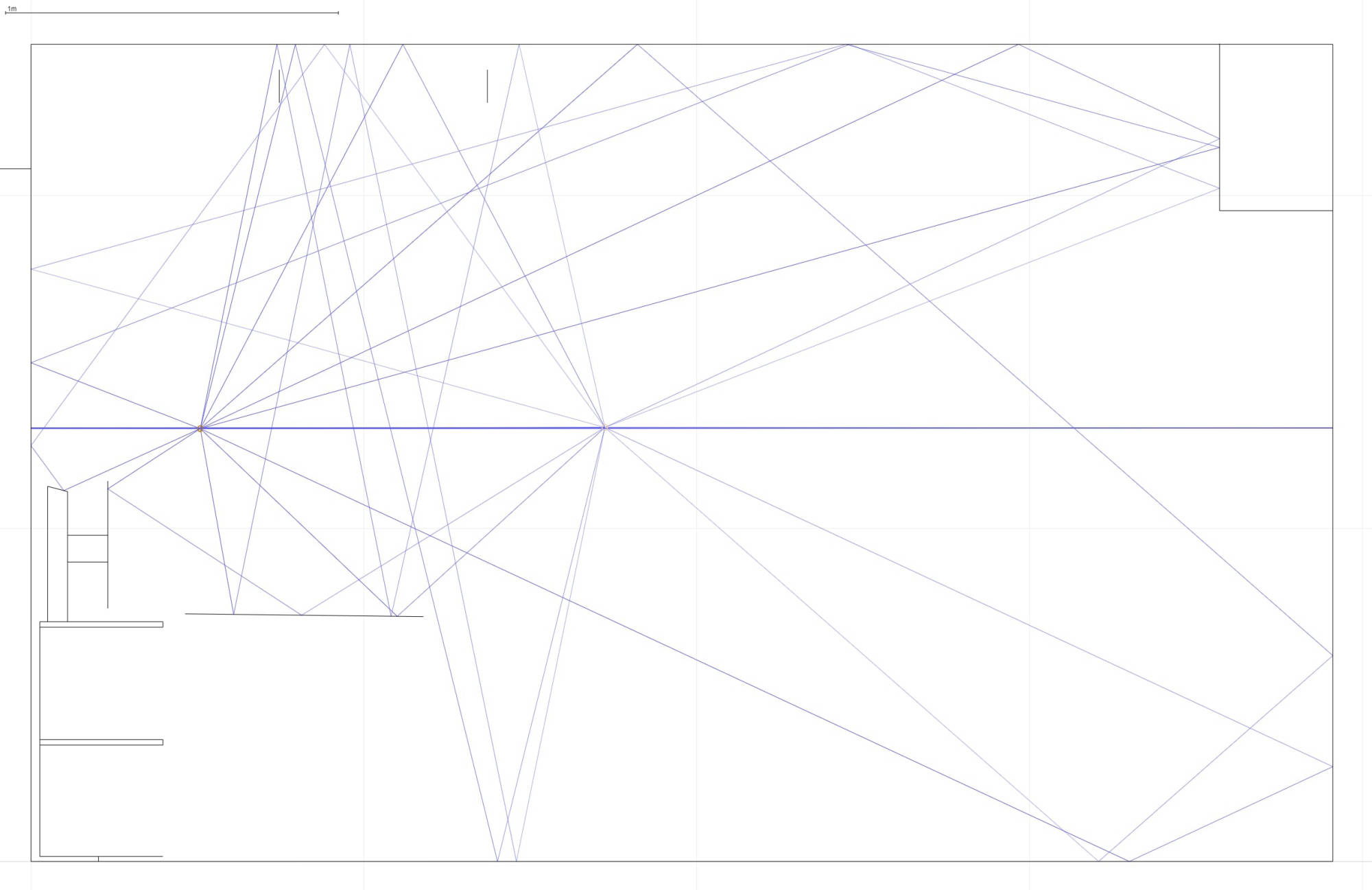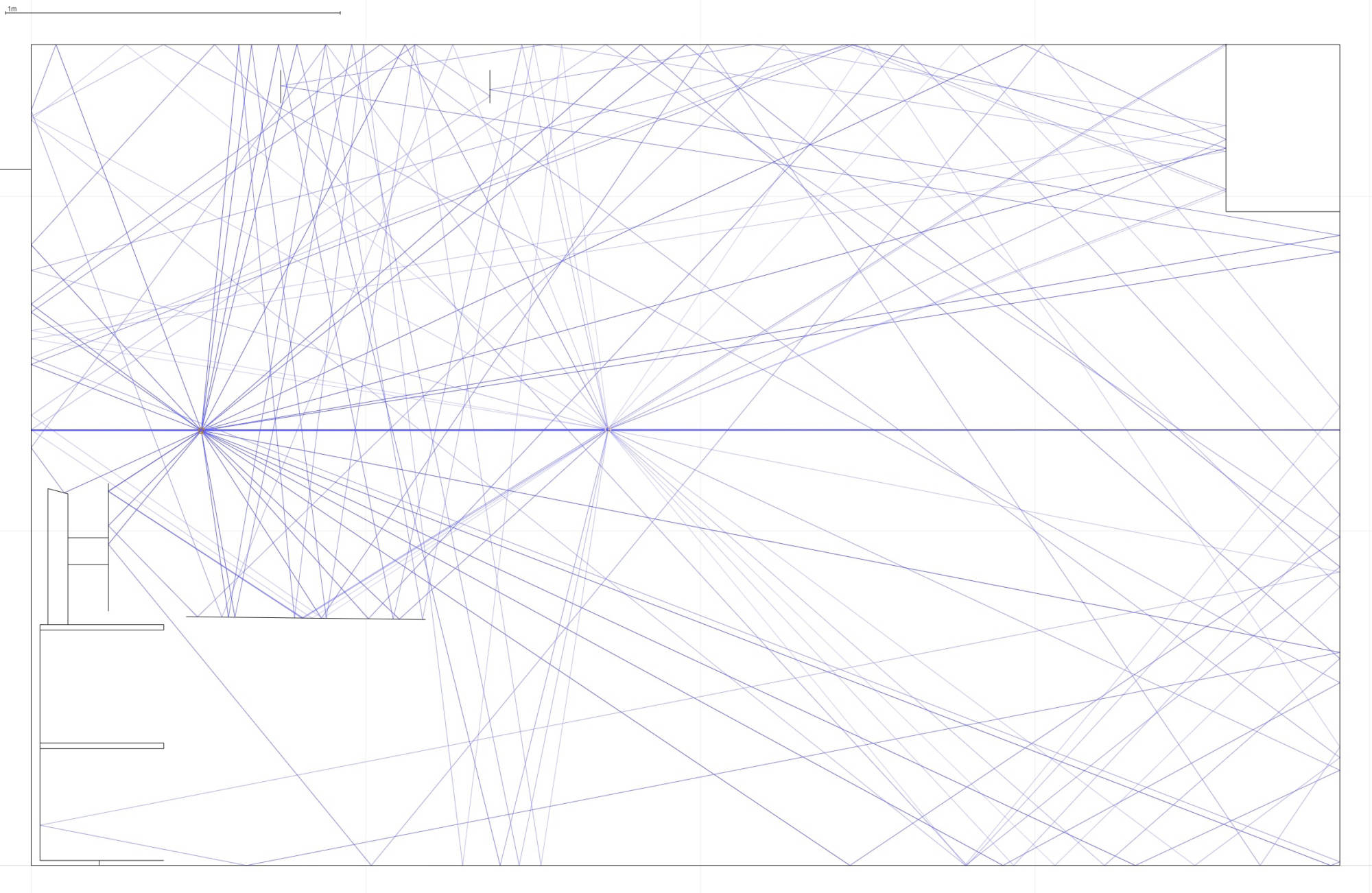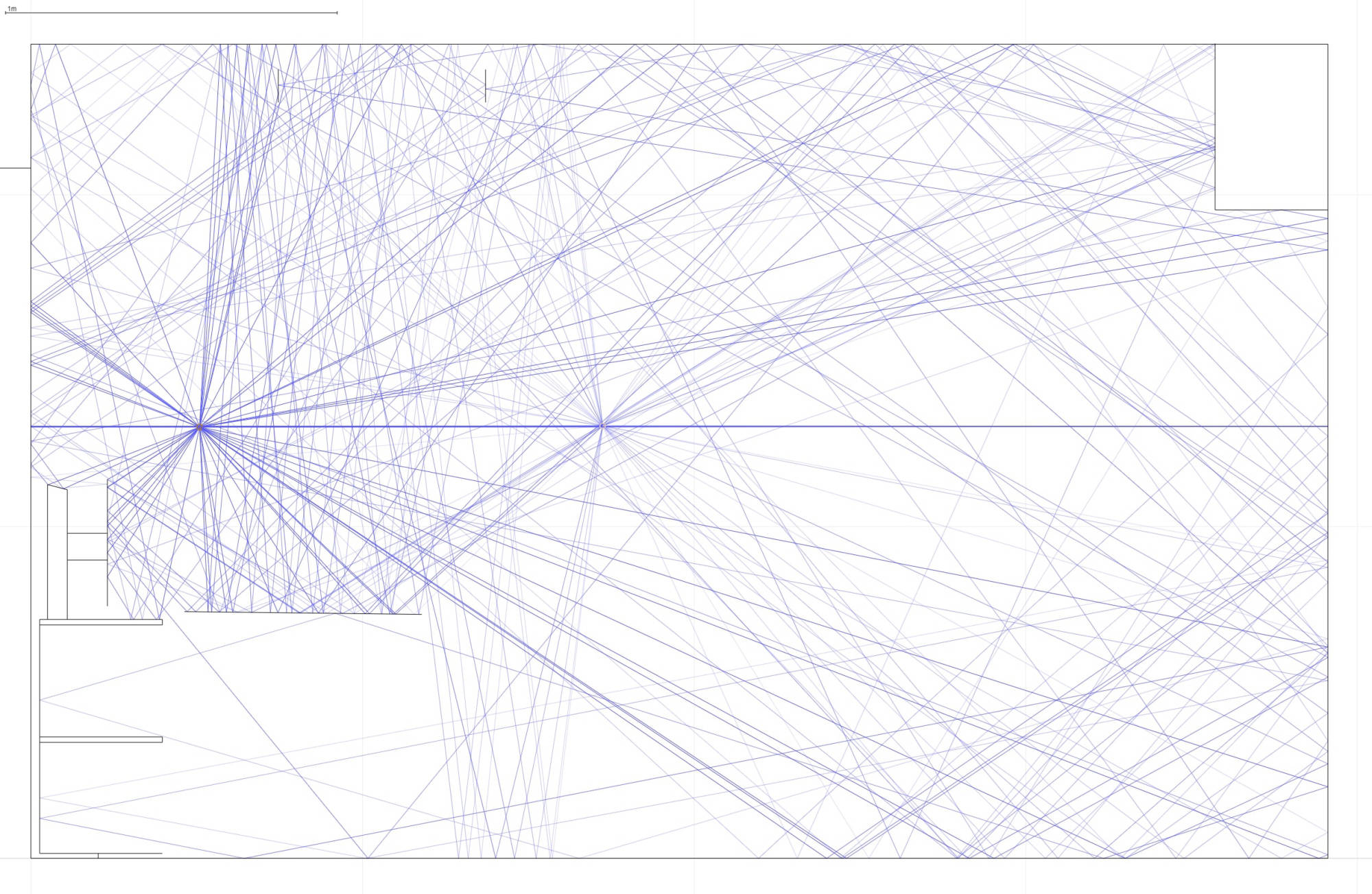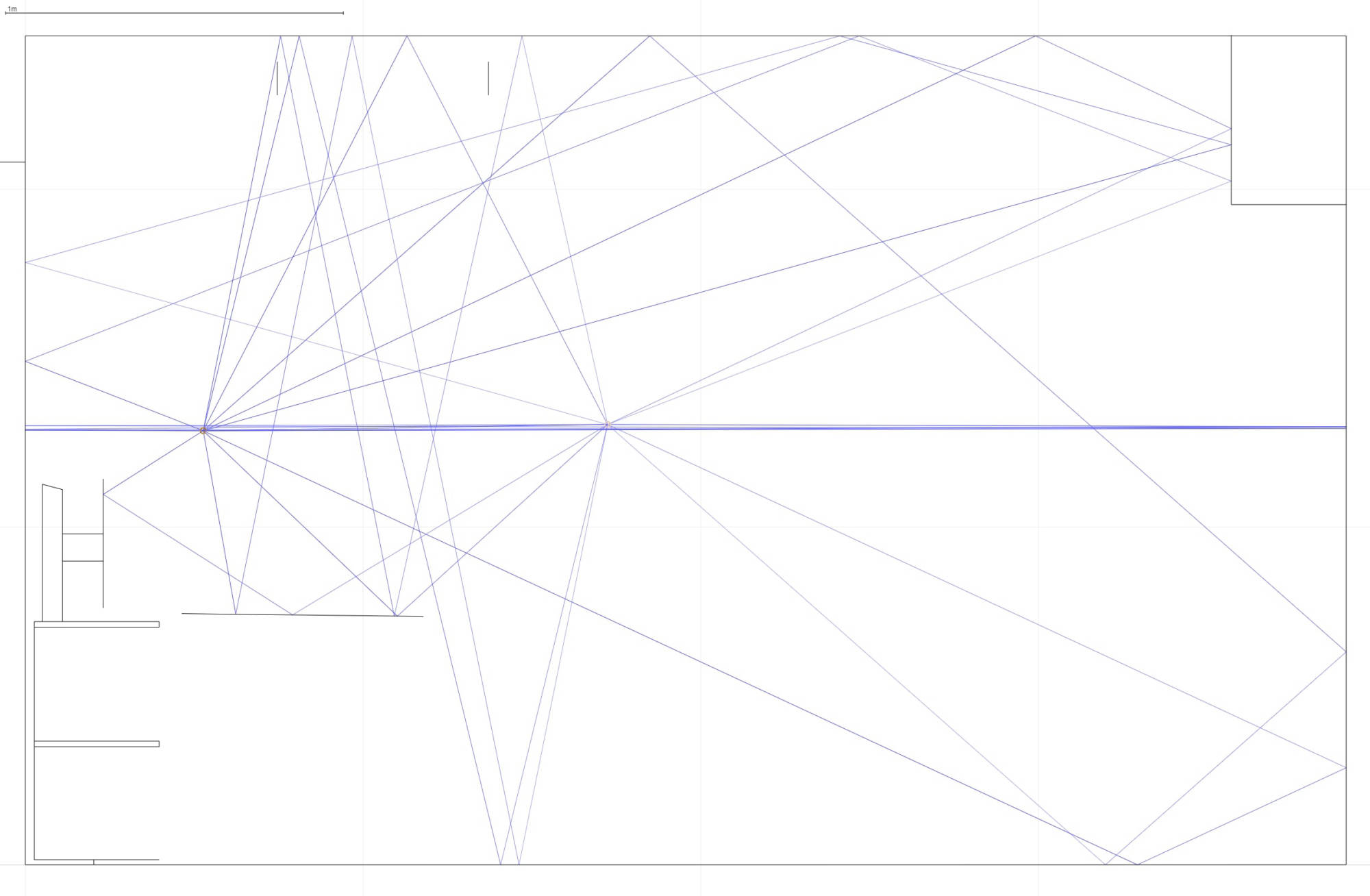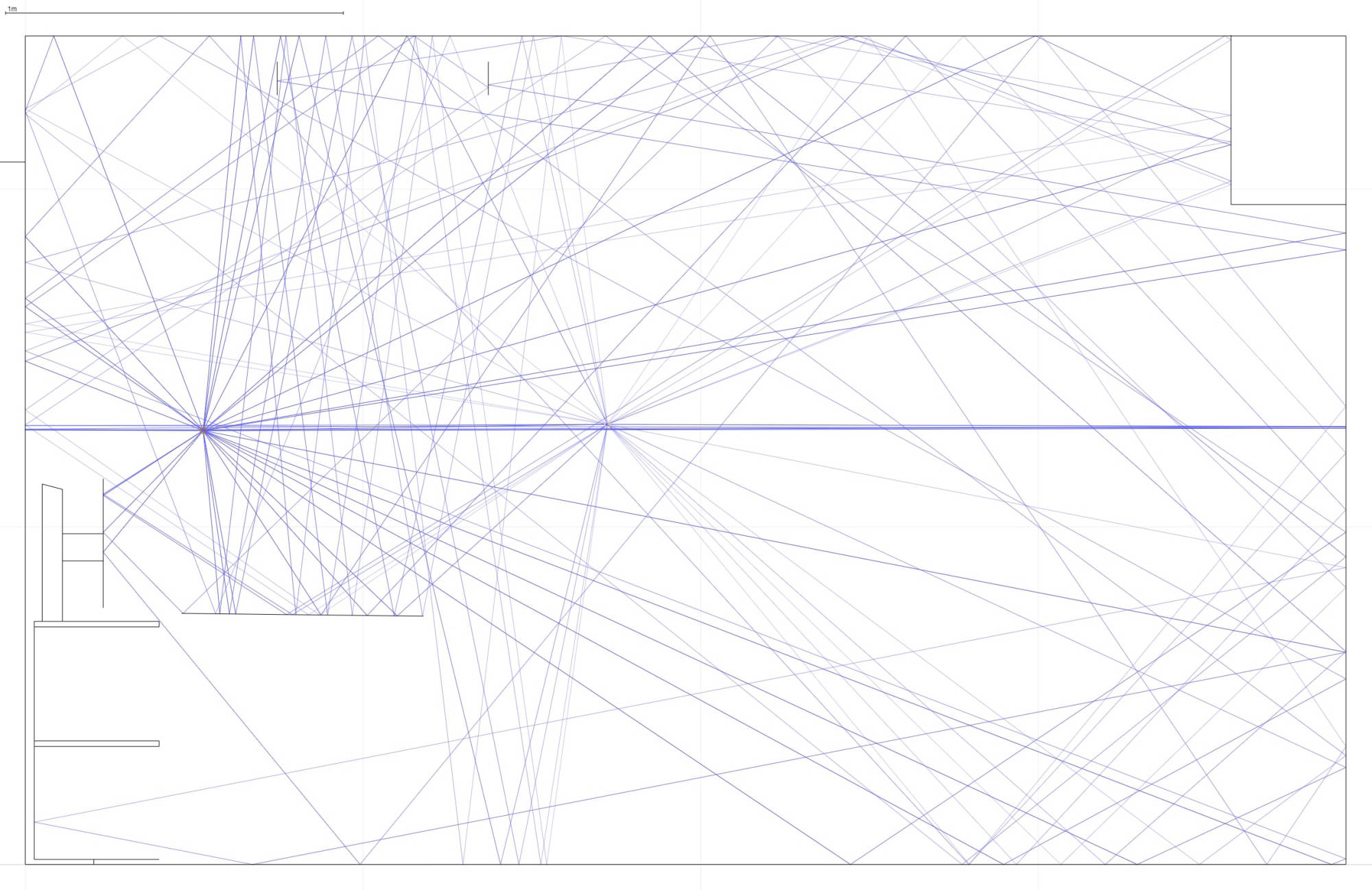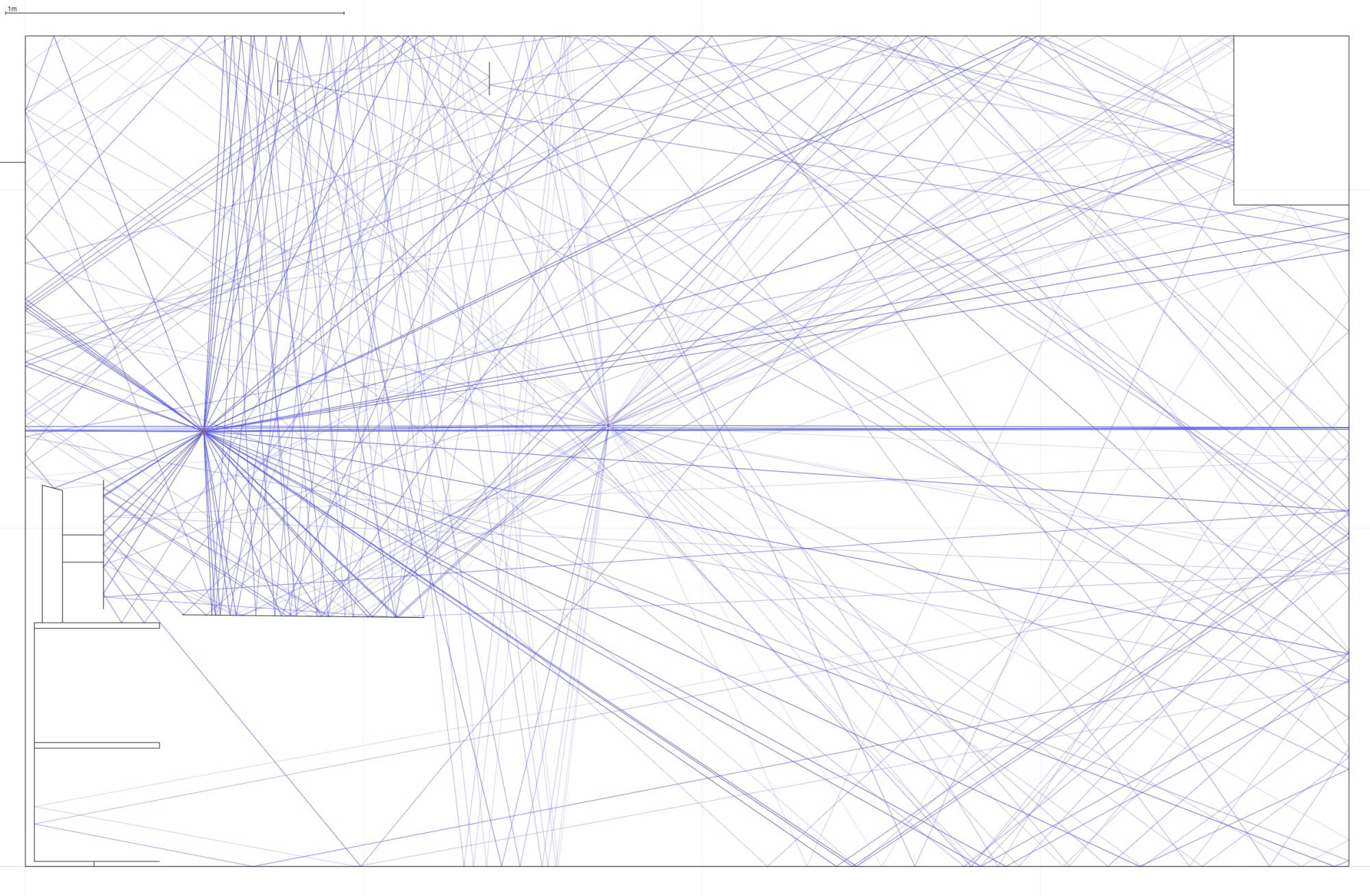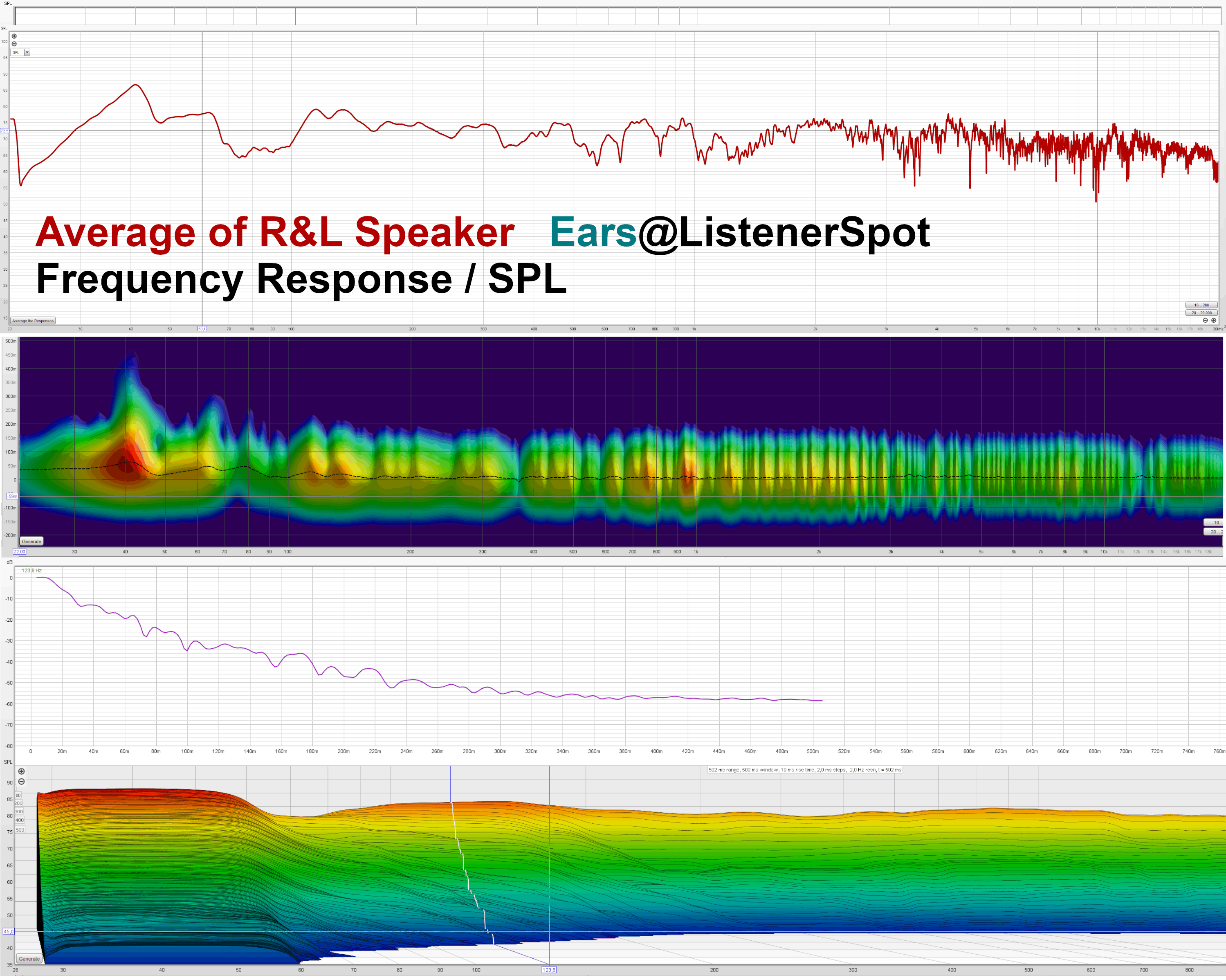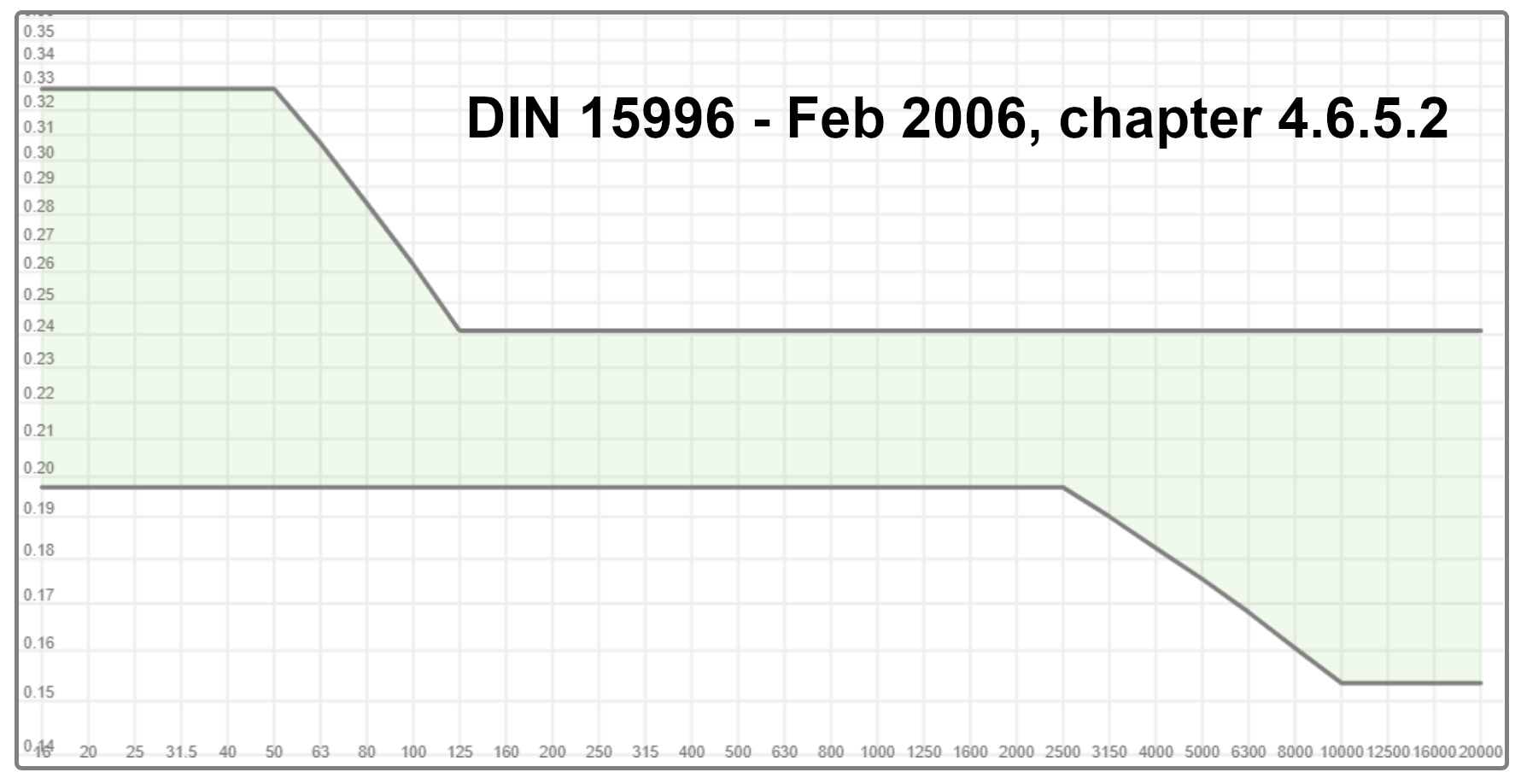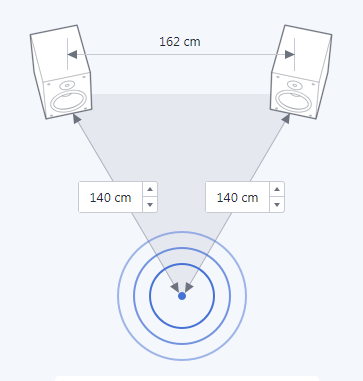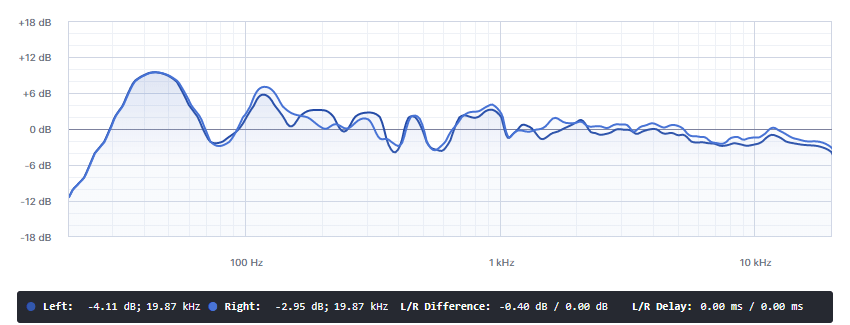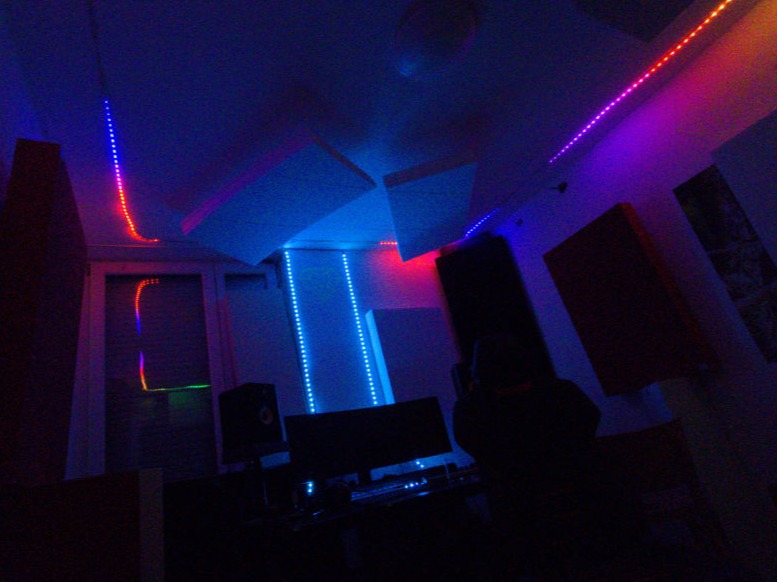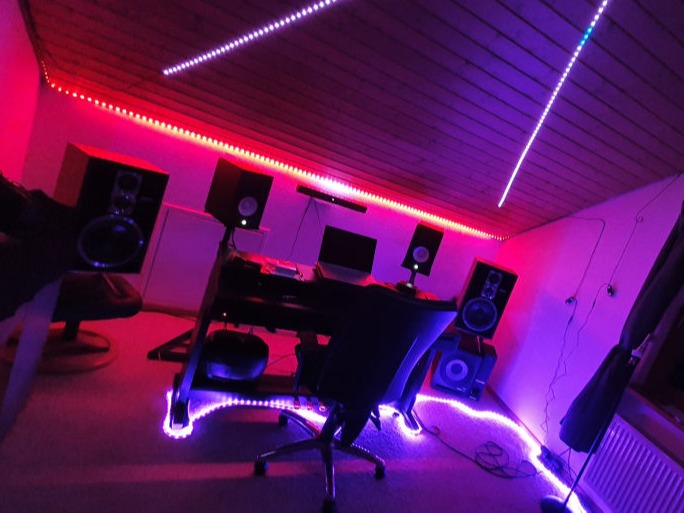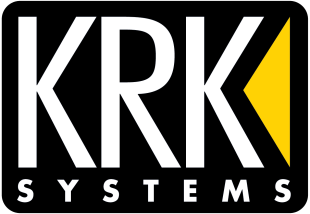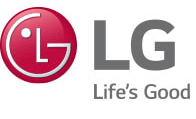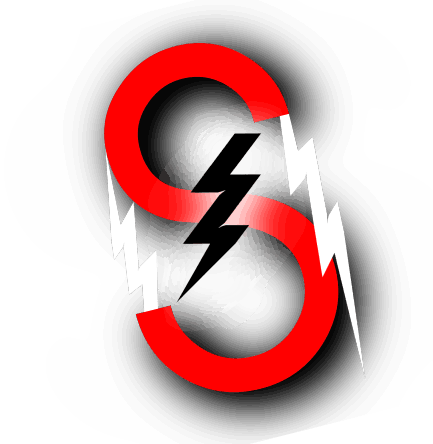The frequency response of each speaker at the listener spot is very balanced.
There are some phase issues that e.g. eliminate 72Hz but overall it is good enough.
Time response is aimed to meet the official DIN 15996 (Feb 2006, chapter 4.6.5.2) standard.
41.4Hz is a frequency problem between the front wall and the back wall.
Because of the enormous energy of that bass frequency and having already treated about every available surface (partially with 4 GIK bass traps) with velocity trap absorbers, there is nothing more that can be done about it, if not choosing specifically trimmed membran/resonance absorbers.
41Hz is however EQed down via Sonarworks and other self-created EQ curves that fit the room.
There is a standing wave at 63Hz, mathematically it should be around 69Hz, and is expected between floor and ceiling. Applied treatment makes it decay within less than 0.3s which is totally fine for Studio A's room dimensions in relation to frequency response. It is still within the DIN Norm below. Active Treatment for this frequency: about six square meters of 30-40cm thick Rockwool panels on the floor, four square meters of 10cm thickness at the ceiling, along with 4 GIK bass traps, 4 AddictiveSound Bass Traps together with several 12cm AddictiveSound Premium Panels.
The applied Basotect G+ are not adding any useful effect for this frequency.
The room's biggest problem was at 121-125Hz and has been successfully fixed.
More about how that specific frequency has been treated:
here.
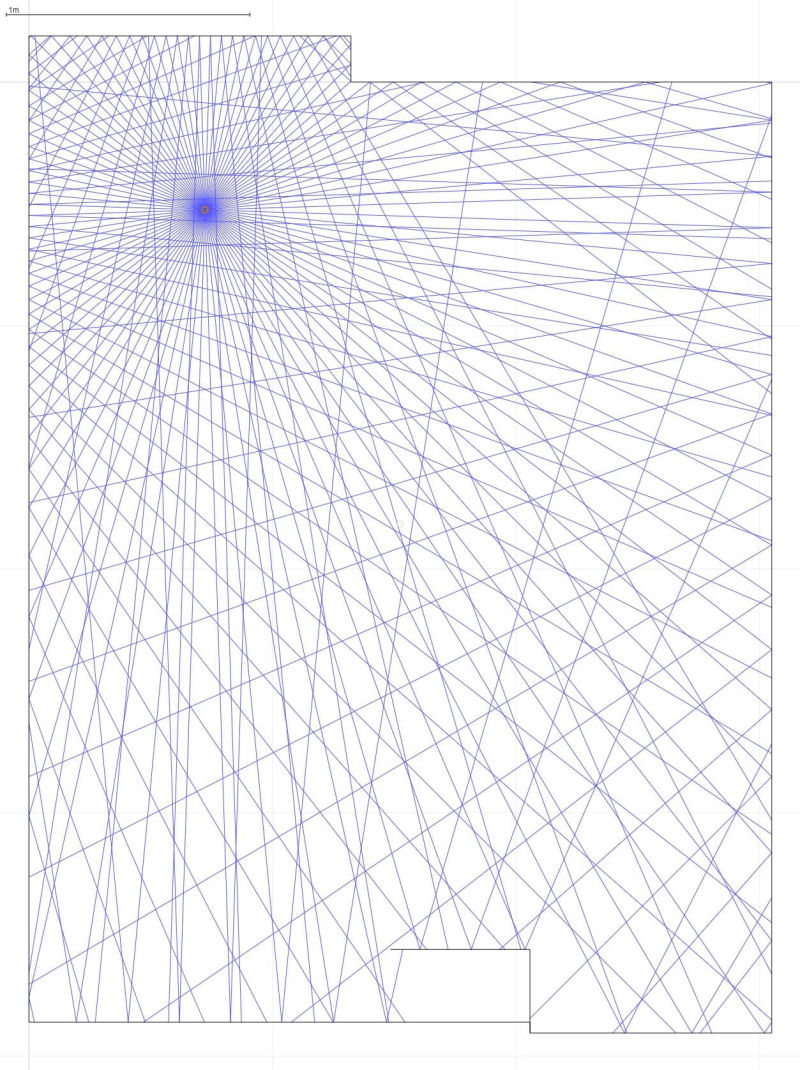 100 rays @ first reflection order
100 rays @ first reflection order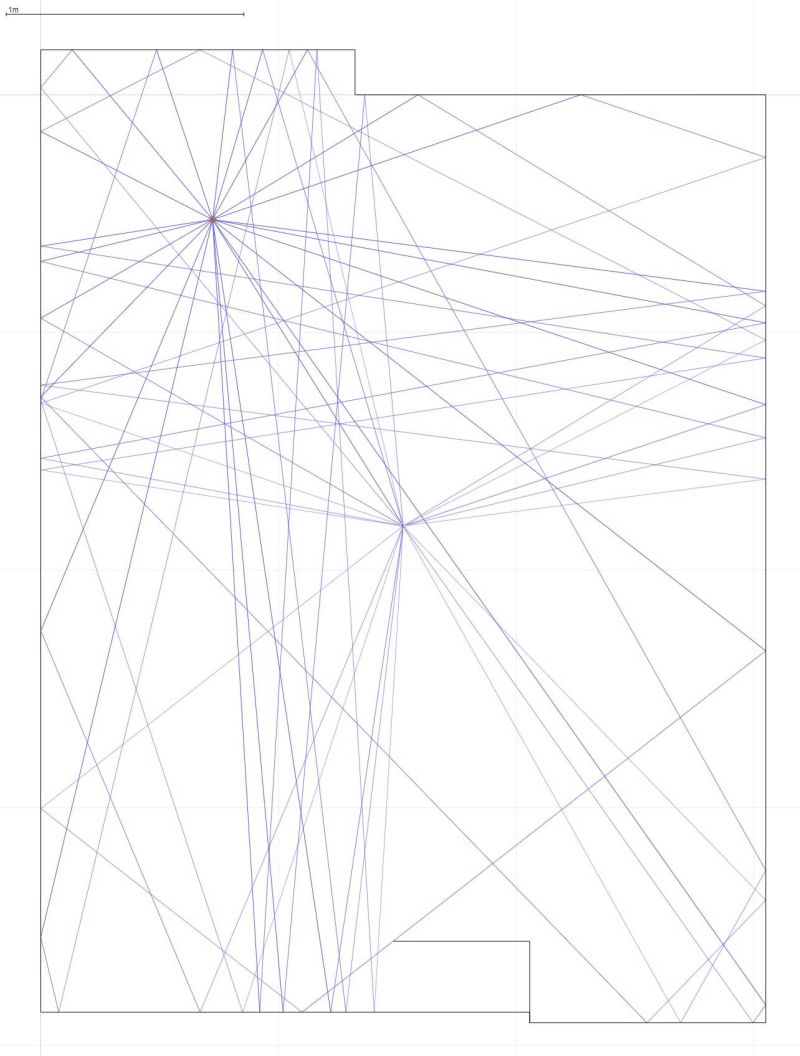 Up to 3rd reflection order
Up to 3rd reflection order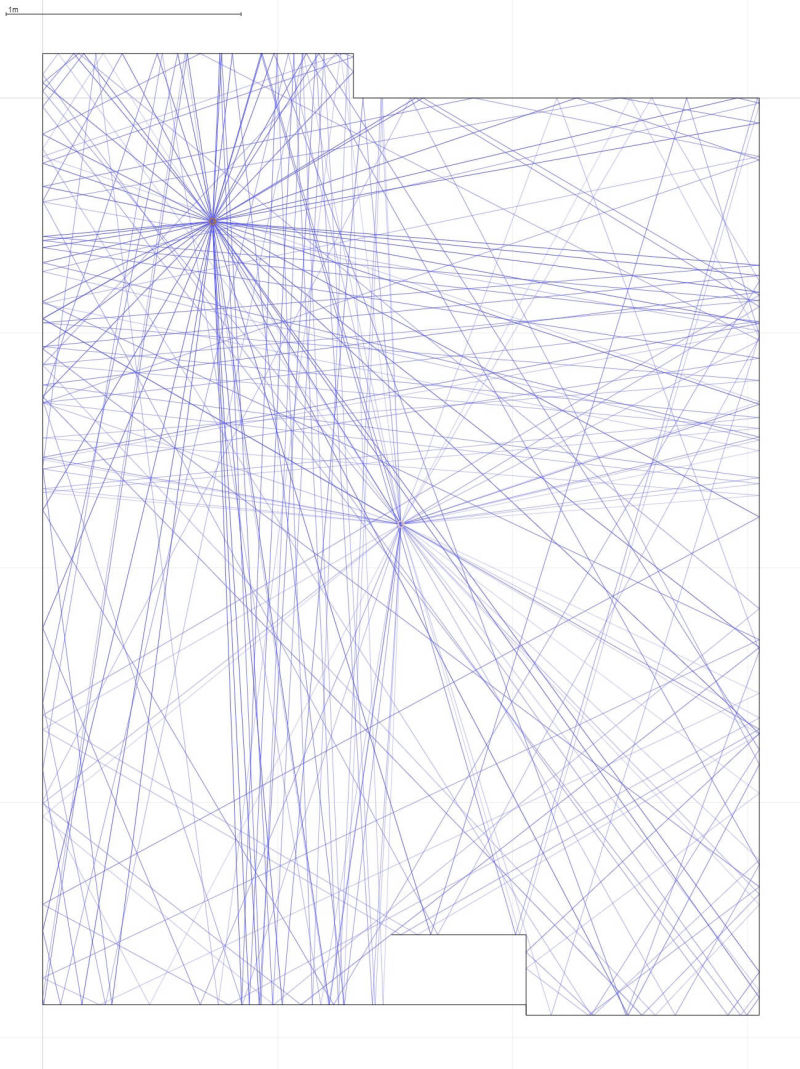 Up to 5th reflection order
Up to 5th reflection order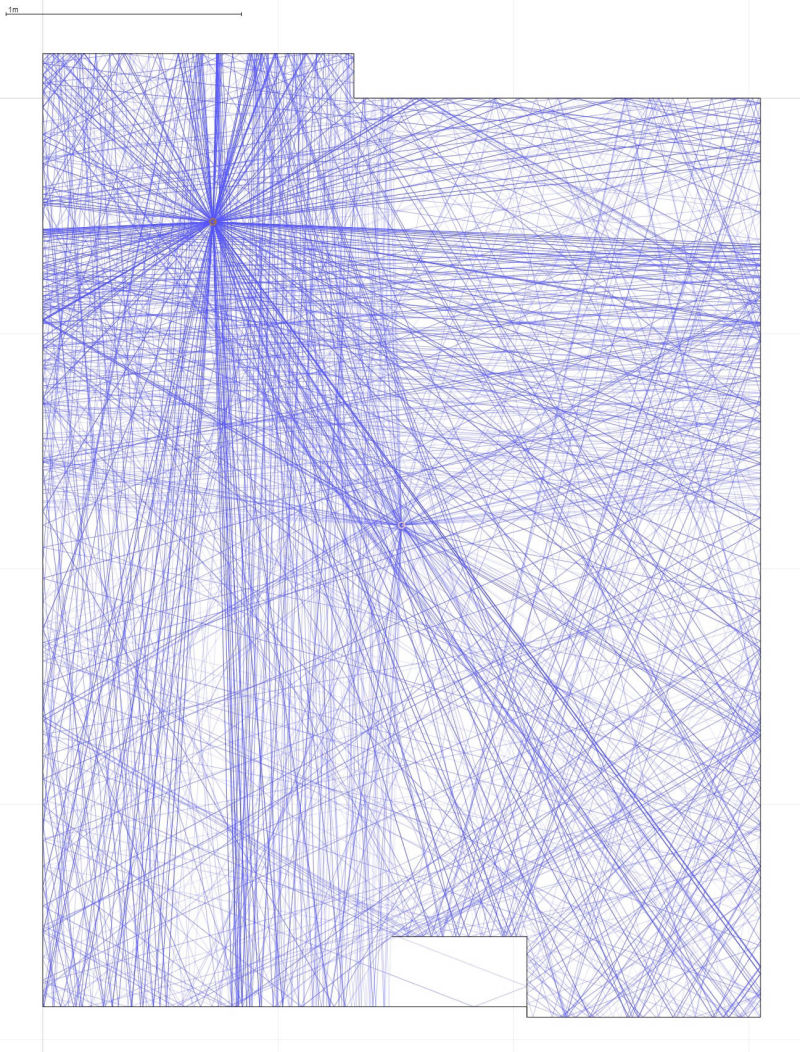 Up to 10th reflection order
Up to 10th reflection order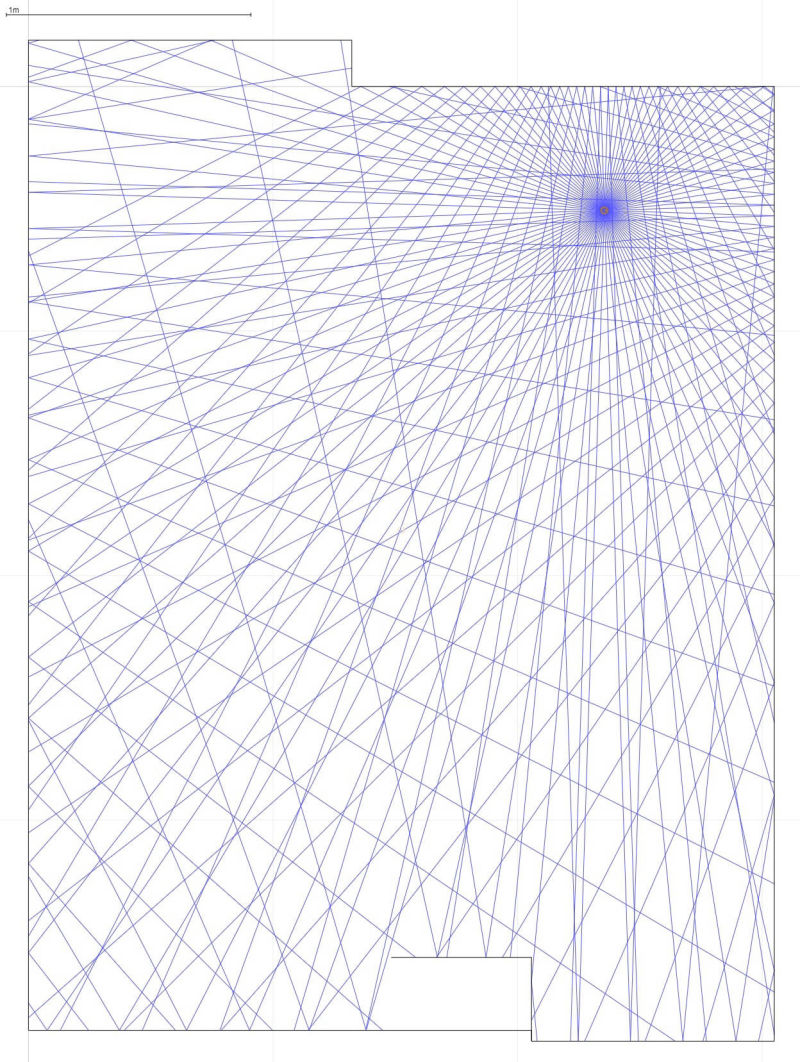 100 rays @ first reflection order
100 rays @ first reflection order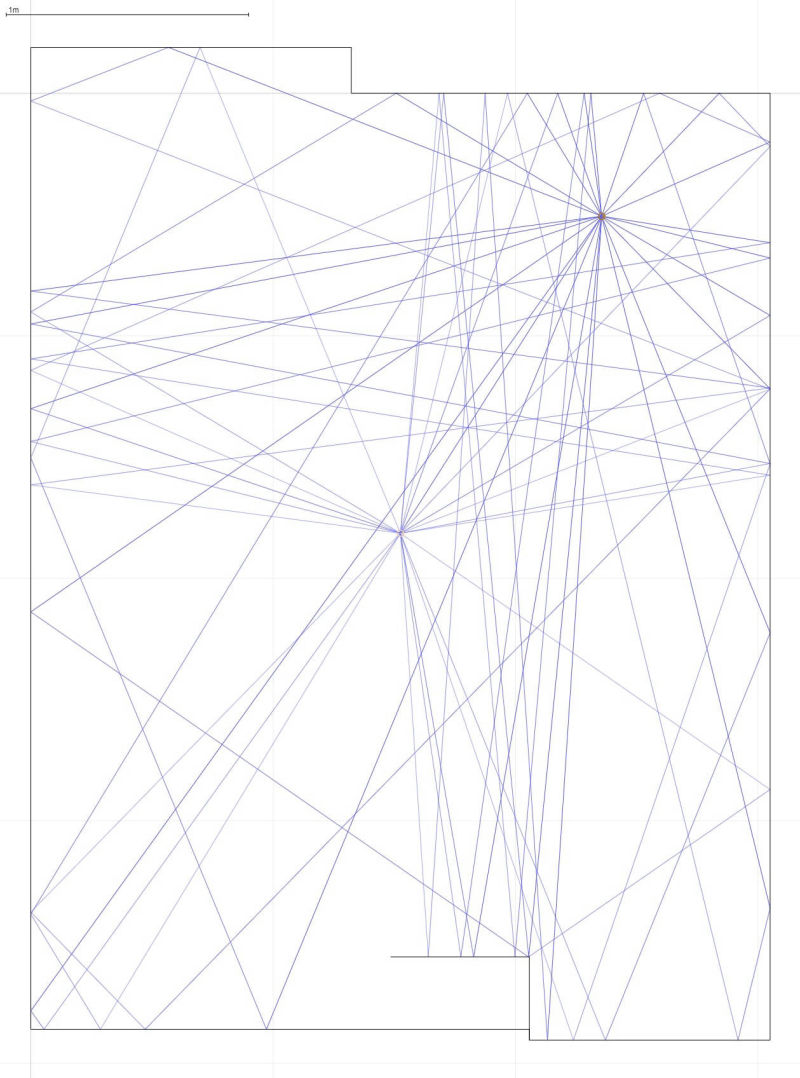 Up to 3rd reflection order
Up to 3rd reflection order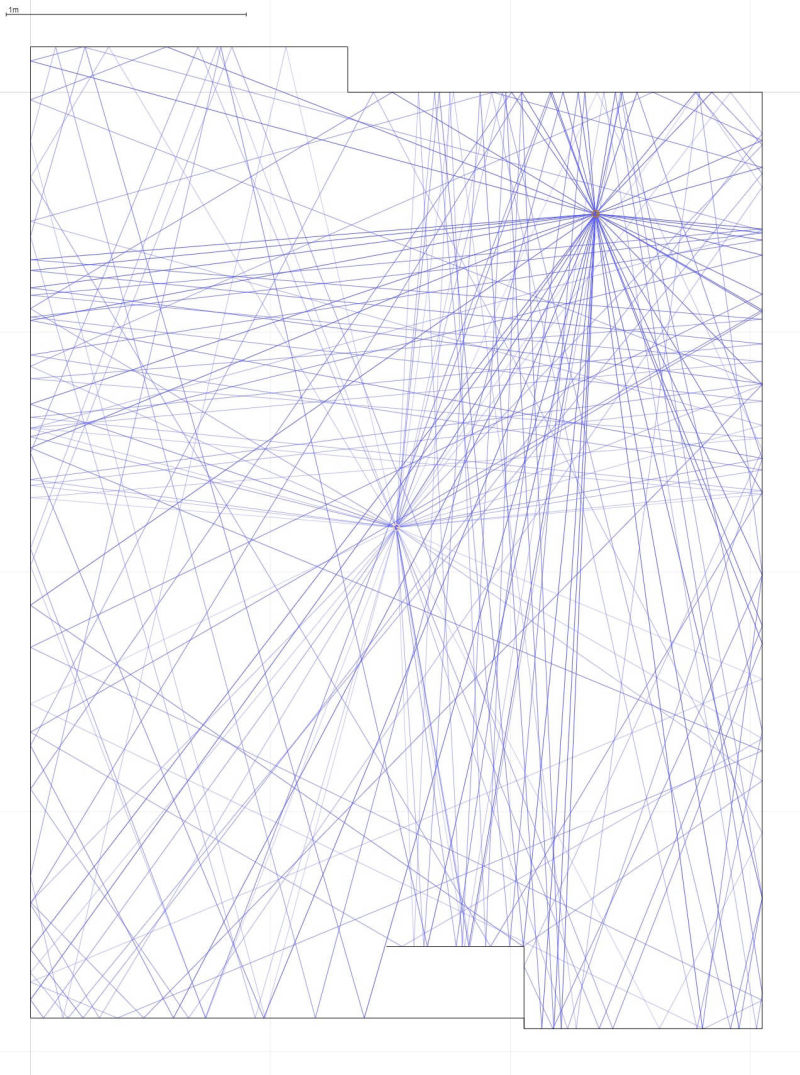 Up to 5th reflection order
Up to 5th reflection order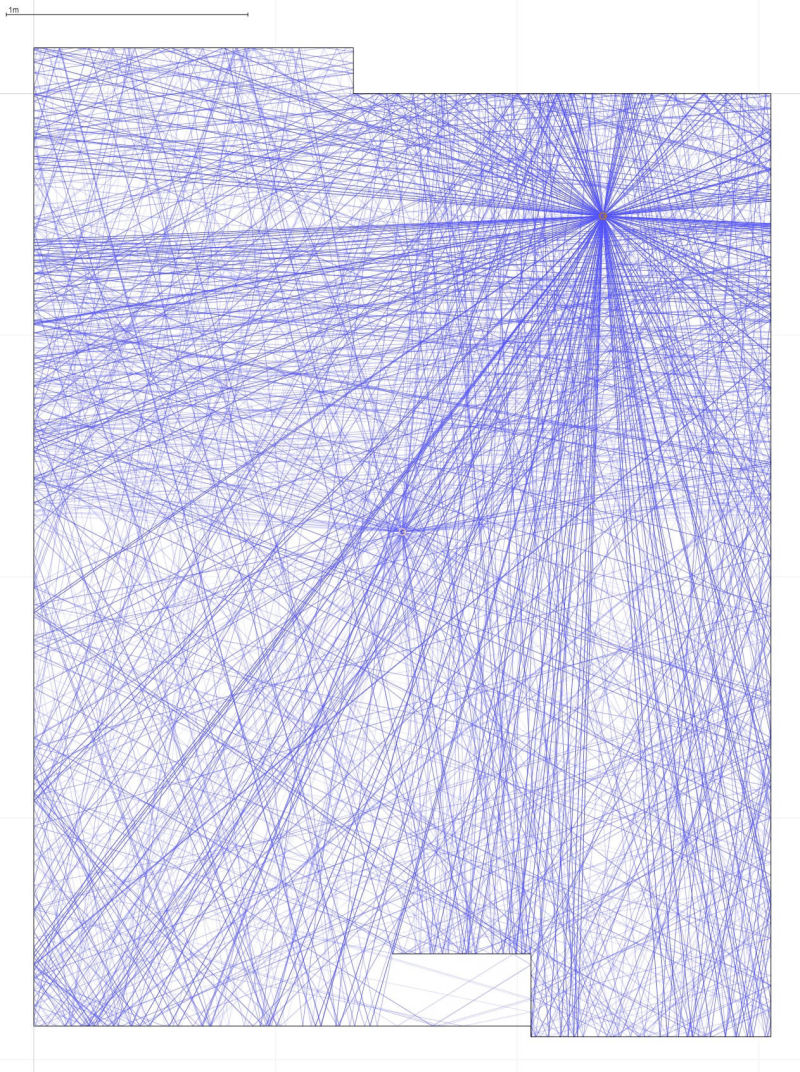 Up to 10th reflection order
Up to 10th reflection order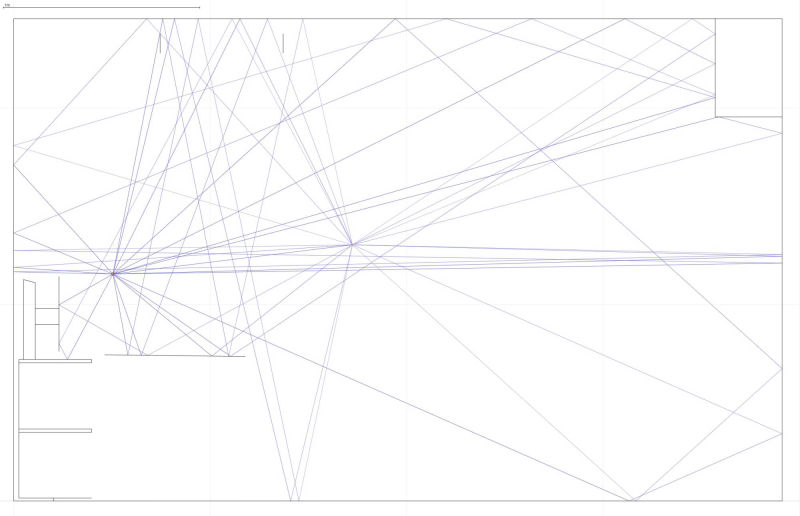 Up to 3rd reflection order
Up to 3rd reflection order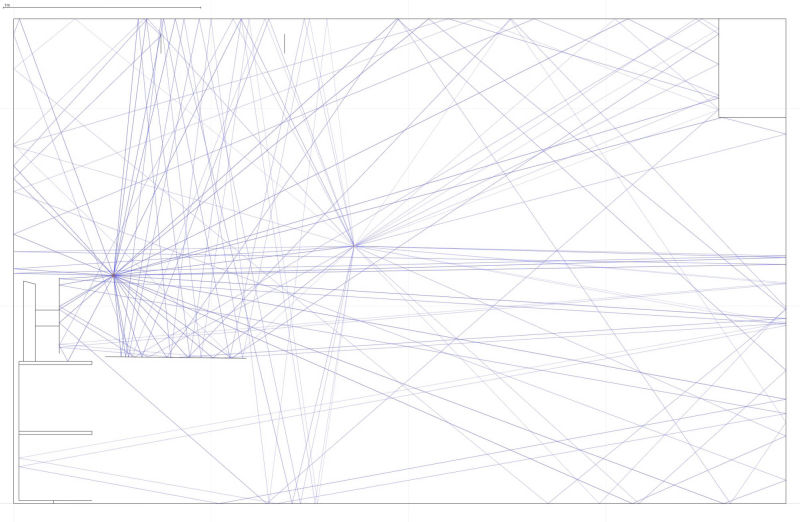 Up to 5th reflection order
Up to 5th reflection order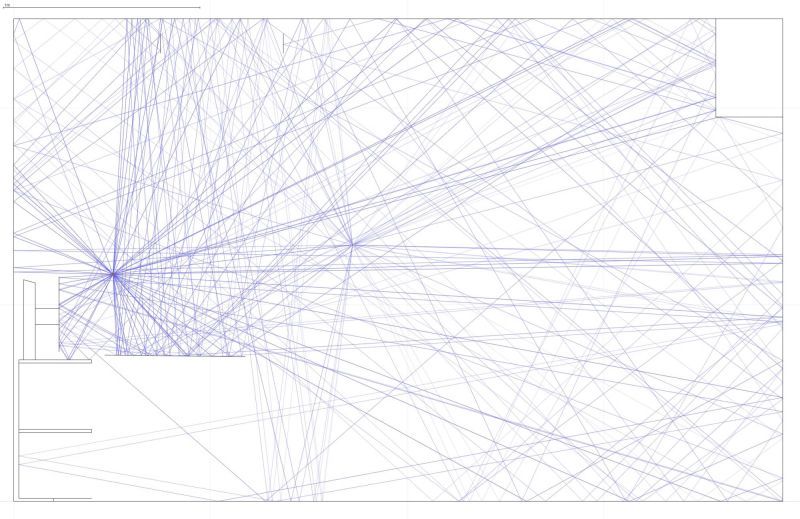 Up to 7th reflection order
Up to 7th reflection order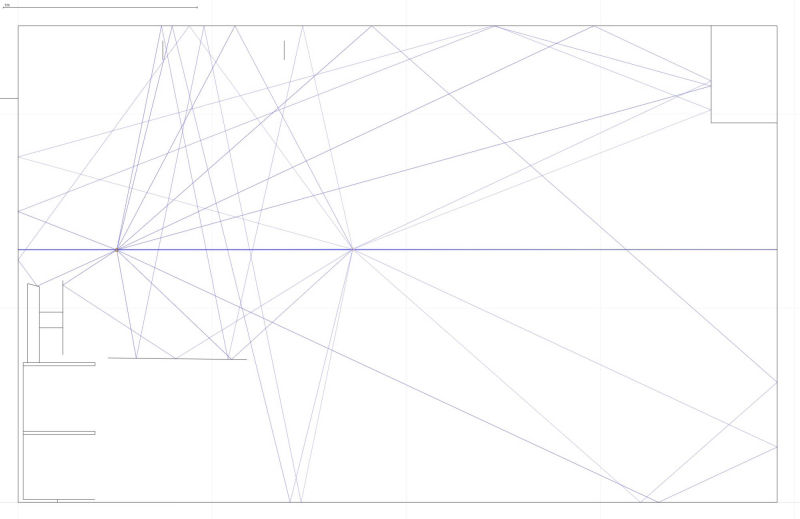 Up to 3rd reflection order
Up to 3rd reflection order Up to 5th reflection order
Up to 5th reflection order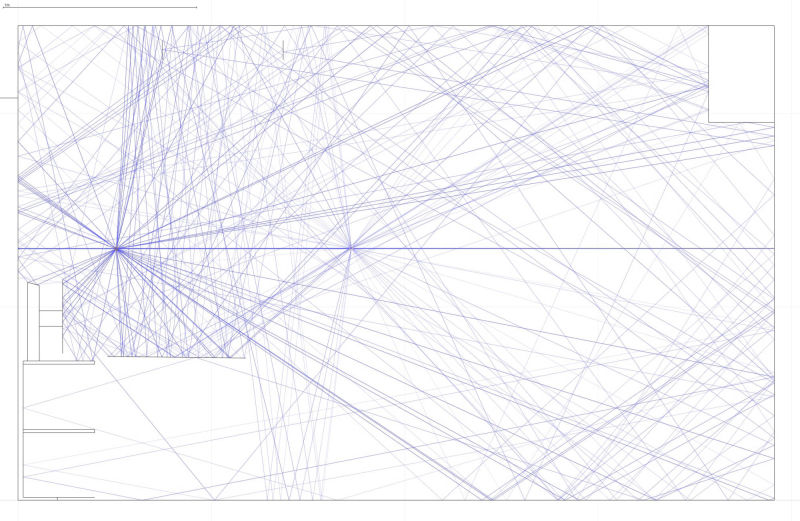 Up to 7th reflection order
Up to 7th reflection order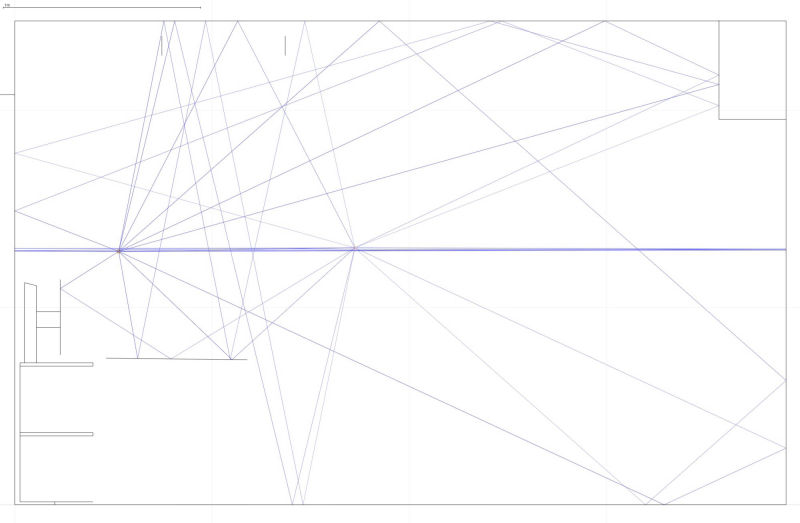 Up to 3rd reflection order
Up to 3rd reflection order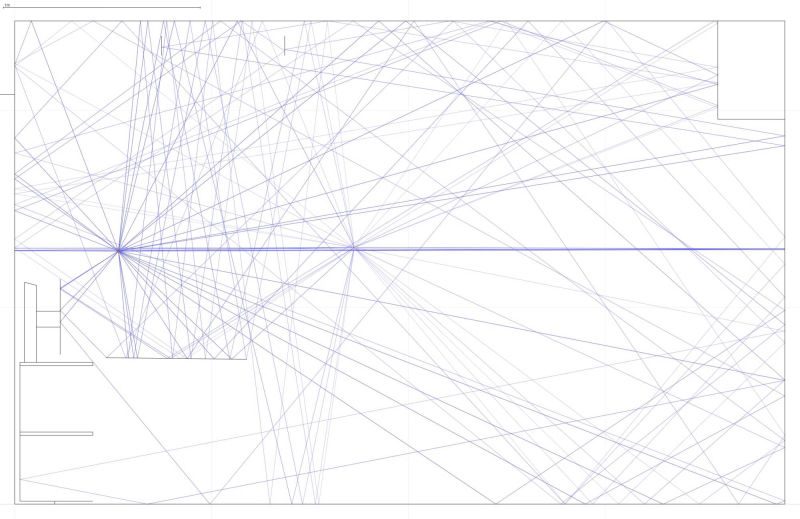 Up to 5th reflection order
Up to 5th reflection order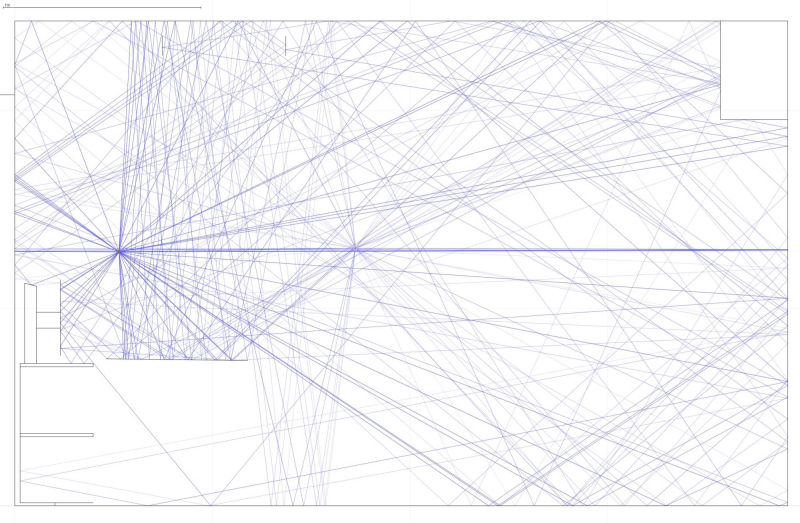 Up to 7th reflection order
Up to 7th reflection order